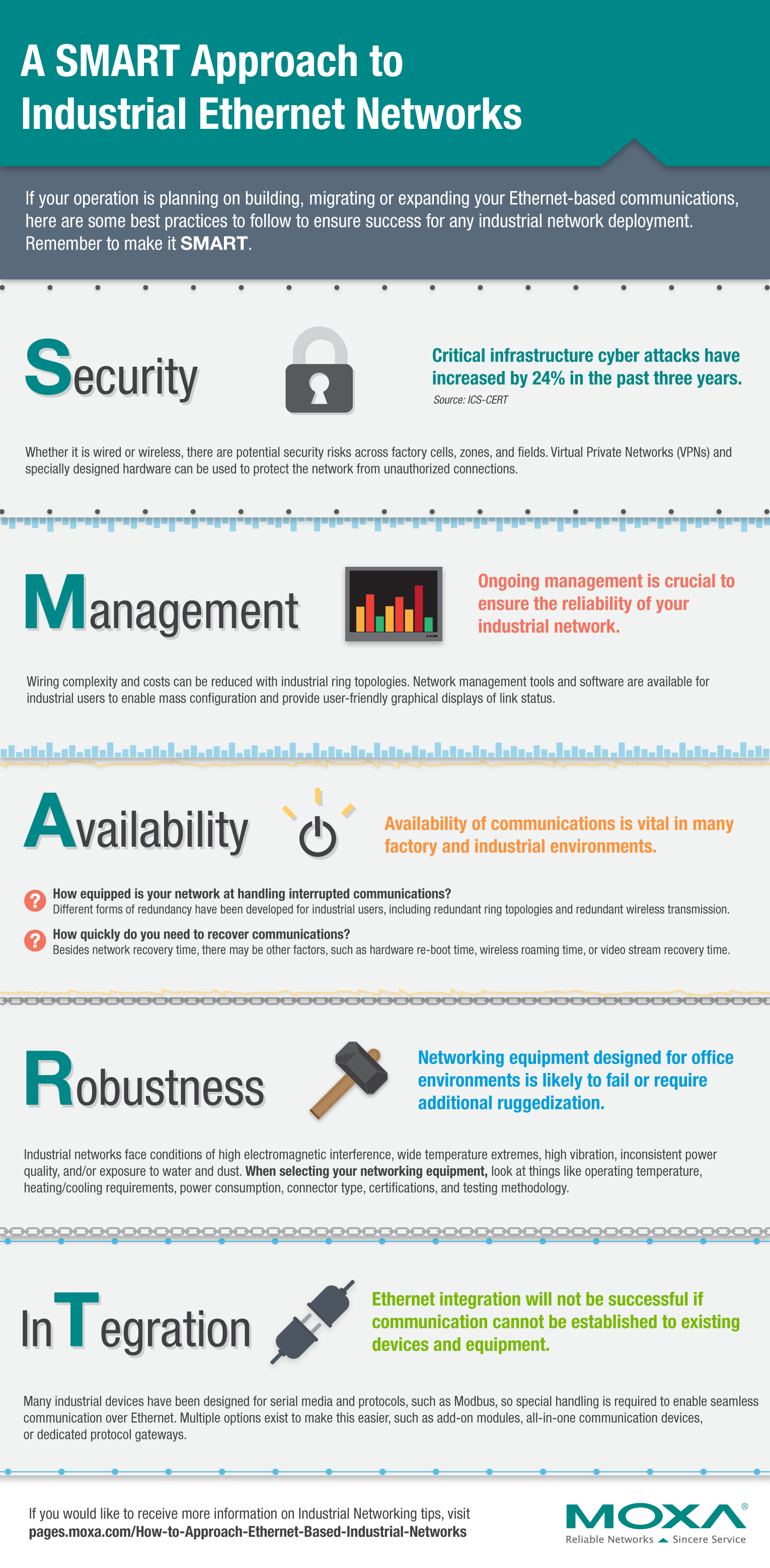When migrating or expanding an industrial network, think SMART.
Chances are, your operation is either already relying on Ethernet-based communications and Internet connectivity, or will be moving in that direction in the near future.
By now, the industrial space has accumulated enough experience to have developed a few best practices. If you are in the process of planning your own migration or expansion, here are some basic things to consider based on what users like you have already experienced:

Security
Make sure that you consider the security of your communications. Whether it is wired or wireless, there are potential security risks across factory cells, zones, and fields. Virtual Private Networks (VPNs) and servers help establish secured remote access across multiple communication zones. Specially designed hardware can also be employed to protect critical devices from unauthorized connections, and to protect the rest of the network from malfunctioning devices.
Management
With Ethernet as the common platform for industrial devices, systems, and services, ongoing management is a crucial consideration. Wiring complexity and cost can be greatly reduced with industrial ring topologies, which also removes the single point of failure present in enterprise star topologies. Network management tools and software have also been specially designed for the needs of industrial users, enabling mass configuration and easy-to-use graphical displays of network link status.
Availability
Communications availability is critical for many factory and industrial environments. How equipped is your network at handling interrupted communications? Different forms of redundancy have been developed for industrial users, including redundant ring topologies and redundant wireless transmission. How quickly do you need to recover communications? Besides network recovery time, there may be other contributing factors, such as hardware re-boot time, wireless roaming time, or video stream recovery time.
Robustness
Where are you deploying your communications network? If it’s industrial, chances are that you are facing conditions of high electromagnetic interference, wide temperature extremes, high vibration, inconsistent power quality, and/or exposure to water and dust. For this reason, networking equipment designed for office environments is likely to fail or require additional ruggedization when deployed for industrial use. Look at things like operating temperature, heating/cooling requirements, power consumption, connector type, certifications, and testing methodology when selecting your networking equipment. Your minimum requirements will depend on your application’s probability and tolerance for communications failure.
inTegration
Ethernet integration will not be successful if communication cannot be established to existing devices and equipment. The network backbone is only part of the equation – it is necessary to consider how to connect everything to your network. Many industrial devices have been designed for serial media and protocols, such as Modbus, so special handling is required to enable seamless communication over Ethernet. Multiple options exist to make this easier for the industrial user, such as add-on modules, all-in-one communication devices, or dedicated protocol gateways.
While every industrial user’s situation is unique, these are the common factors that can help ensure success for any industrial network deployment. If you’re interested in exploring this topic in greater depth, check out our on-demand webinar titled
Building a SMART Network for the Industrial IoT.
Have a question about this topic? We would love to hear from you. Please feel free to contact us and one of our representatives will reach out to you with more information.
Related Topics
